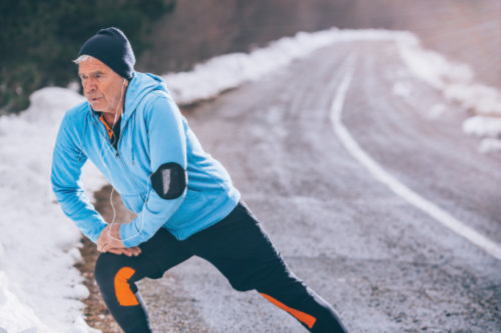Yes! It’s true!
Exercising in cold weather really does burn more calories.
Let’s get to the heart of the issue here; in the dead of winter it is just really hard to stay motivated to keep moving.
During times like these I have to pull out all the stops to keep myself as motivated as possible.
I’d like to share with you some of the great reasons to keep exercising even when it is freezing cold, as well as give you a few tips on how to stay safe while exercising during these last few chilly weeks of winter.
As mentioned above, exercising in the cold burns more calories.
A one-mile walk in cold weather will burn more calories than a one-mile walk in the summer. The cold causes your body to have to work harder to keep its core temperature elevated in addition to the calories being burned from muscle work.
In addition to the bonus calorie burn, getting outside will provide a little vitamin D boost.
Despite all of our snowfall, March is also a great month to soak up a few extra hours of sunshine. Vitamin D helps to maintain healthy bones and it also elevates one of our happy hormones, serotonin.
Because of that, cold weather exercise will also boost your mood.
The crisp air filling your lungs and getting your heart rate elevated promotes the production of endorphins which are chemicals that help you manage your stress levels.
Last, but not least, exercise in cold weather strengthens your heart.
The cold temperature causes your heart to have to pump harder to get good blood flow to your arms and legs. The only exception to this rule is if you have a preexisting heart condition, so please check with your physician if you fall into that category.
Now that you are motivated to get outside and get moving, I want to give you a few quick tools to help make your outdoor exercise routine safe and effective.
— In order to get good traction, make sure you have a warm pair of boots and use external shoe grips, such as Yaktrax, on the sole of your boot for good footing on icy roads.
— While getting dressed try to choose clothing that will wick away moisture. For example, a dri-fit shirt and wool socks will help keep you warm and dry.
— Finally, walking sticks or old ski poles are helpful for maintaining balance and keeping you upright.
Andrea Ancel is a physical therapist at Northern Michigan Sports Medicine Center in Petoskey and Harbor Springs. She can be reached via e-mail at aancel@nmsportsmed.com. This information is not t







